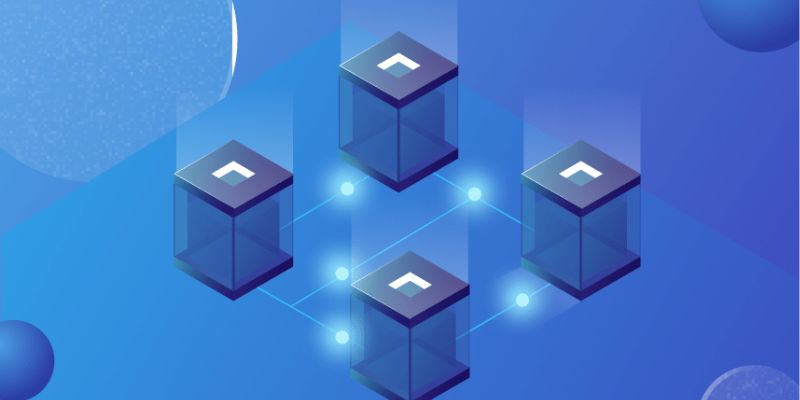Categories: General Information
What is a Blockchain? Understanding the Basics of this Revolutionary Technology
What is a blockchain, and how does it work? At its core, a blockchain is a decentralized digital ledger that records transactions in a secure, transparent, and tamper-proof manner.
Blockchain technology has become a buzzword in recent years, thanks in large part to its role in powering cryptocurrencies like Bitcoin. So what is a blockchain and how does it work? At its core, a blockchain is a decentralized digital ledger that records transactions in a secure, transparent, and tamper-proof manner.
Table of Contents
What is a blockchain?
What is a blockchain? A blockchain is a decentralized and distributed digital ledger technology that allows multiple participants to record and verify transactions in a secure and transparent manner. It is the underlying technology that powers cryptocurrencies like Bitcoin, but its applications go beyond digital currencies.
At its core, a blockchain is a chain of blocks, where each block contains a list of transactions. These transactions can involve the exchange of assets, data, or any other information. Each block also contains a reference to the previous block, creating a chronological chain. This linkage between blocks ensures the integrity of the data, as altering a single block would require changing all subsequent blocks, making it extremely difficult to tamper with the data stored on the blockchain.
The decentralized nature of blockchain means that there is no central authority or single point of control. Instead, the entire network of participants collaborates to validate and add new blocks to the chain through a consensus mechanism. Different blockchains may use various consensus mechanisms, such as Proof of Work (PoW) or Proof of Stake (PoS), to ensure agreement among the network nodes.

Providing an effective Blockchain platform definition
Blockchain technology gained prominence in 2009 with the introduction of Bitcoin as the first cryptocurrency and real Blockchain platform. So, what is a Blockchain platform? Essentially, it is a platform designed to support a particular type of Blockchain. There are many types of Blockchain platforms available, each addressing different business needs, including free Blockchain platforms.
To illustrate this point, let's examine some of the most popular Blockchain platforms available:
- Ethereum: This is perhaps the most popular Blockchain platform after Bitcoin. It is a decentralized platform that runs smart contracts on a custom-built Blockchain.
- Hyperledger: This is a modular Blockchain platform that enables the creation of a new generation of transactional applications. It is designed to establish trust, accountability, and transparency.
- R3: This is an enterprise Blockchain platform that has an ecosystem of over 300 firms working together to create distributed applications for use across different industries, such as financial services, insurance, healthcare, trade finance, and digital assets.
Furthermore, several Blockchain platform companies provide niche solutions for various use cases. With numerous Blockchain technology platforms available and more appearing all the time, choosing the best one for your business will ultimately depend on your specific requirements.
However, for the purposes of this blog, we will focus on the advantages that broad-based enterprise Blockchain platforms, like Hyperledger or R3, can offer.

How does blockchain work?
Over the past few years, the integration of Blockchain technology in various businesses worldwide has become increasingly noticeable. But what exactly is Blockchain technology, and how does it work? Is it merely a minor addition, or could it be a significant game-changer? The advancements made in Blockchain technology are still in their early stages and hold the potential to revolutionize the future. Therefore, it is essential to start unraveling the mystery of this technology.
So, what is a blockchain? Blockchain is a combination of three leading technologies that work together to enable its functionality. The first of these technologies is cryptographic keys, consisting of two keys – A private key and a Public key. These keys play a vital role in facilitating successful transactions between two parties. Each individual in the Blockchain network has these two keys, which they use to create a secure digital identity reference. This secured identity is the cornerstone of Blockchain technology, and in the world of cryptocurrency, it is referred to as the ‘digital signature' used for authorizing and controlling transactions.
The digital signature is combined with a peer-to-peer network that contains a shared ledger, which is the second technology used in Blockchain. The network consists of a large number of individuals who act as authorities and use the digital signature to reach a consensus on transactions and other issues. When they authorize a deal, it undergoes mathematical verification, which results in a successful secured transaction between the two parties connected on the network.
The third technology used in Blockchain is a means of computing, which is used to store the transactions and records of the network. Blockchain users employ cryptography keys to perform different types of digital interactions over the peer-to-peer network, all of which are stored in the shared ledger.
In conclusion, Blockchain technology combines cryptographic keys, a peer-to-peer network containing a shared ledger, and a means of computing to enable secure digital interactions. It is still in its early stages, but its potential to revolutionize the future cannot be ignored.
.jpg)
How is blockchain used?
Blockchain technology has a wide range of applications, from supporting financial services to managing voting systems. Currently, the most common use of blockchain is as the foundation of cryptocurrencies like Bitcoin and Ethereum. Transactions involving cryptocurrency are recorded on a blockchain, and as more people use cryptocurrency, the use of blockchain could become more widespread.
While blockchain is primarily associated with cryptocurrencies, it is also being used in the banking sector to process transactions involving fiat currency, such as dollars and euros. Transactions can be verified more quickly and processed outside of normal business hours, potentially making the process faster than sending money through a traditional bank.
Another use of blockchain is to record and transfer the ownership of different types of assets. This is particularly popular with digital assets like NFTs, but blockchain could also be used to process the ownership of real-life assets like real estate and vehicles. Parties could use the blockchain to verify ownership and payment, completing and recording the sale on the blockchain without manually submitting paperwork to update local government records.
Smart contracts are another blockchain innovation, which is self-executing contracts that are automatically enacted once specified conditions are met. Smart contracts can minimize the need for outside third parties to verify performance and automate legal contracts using coded instructions on a distributed ledger.
Blockchain can also be used in supply chain monitoring, making it easier to trace the source of problems and monitor the supply chain from harvest to consumption. Additionally, experts are exploring the use of blockchain in voting to prevent fraud and eliminate the need for manual collection and verification of paper ballots. With blockchain voting, people could submit tamper-proof votes.
Advantages of blockchain
One of the key advantages of blockchain technology is its ability to offer higher accuracy in transactions. This is due to the fact that a blockchain transaction must be verified by multiple nodes, which can help to reduce errors. In the event that one node has a mistake in the database, the others would see that it's different and catch the error.
In contrast, in a traditional database, if someone makes a mistake, it may be more likely to go through. Moreover, every asset is individually identified and tracked on the blockchain ledger, which means there is no chance of double-spending it, as can occur with traditional financial transactions.
Another benefit of blockchain technology is that it eliminates the need for intermediaries. This means that two parties in a transaction can confirm and complete something without working through a third party, thereby saving time and costs associated with intermediaries like banks. According to Shtylman, "It has the ability to bring greater efficiency to all digital commerce, to increase financial empowerment to the unbanked or underbanked populations of the world, and to power a new generation of internet applications as a result."
In addition, blockchain technology provides extra security, as a decentralized network makes it nearly impossible for someone to make fraudulent transactions. To enter forged transactions, they would need to hack every node and change every ledger. Although this is not necessarily impossible, many cryptocurrency blockchain systems use proof-of-stake or proof-of-work transaction verification methods that make it difficult, as well as not in participants’ best interests, to add fraudulent transactions.
Finally, blockchains offer more efficient transfers, as they operate 24/7, allowing people to make more efficient financial and asset transfers, particularly across international borders. They don’t need to wait days for a bank or government agency to manually confirm everything, which can save significant time and resources.

Is blockchain secure?
Blockchain technology enables decentralized security and trusts through several mechanisms. Firstly, new blocks are added linearly and chronologically, meaning they are always appended to the "end" of the blockchain. Once a block is added, it becomes extremely difficult to modify its contents unless a majority of the network agrees to do so.
Each block contains its own hash, as well as the hash of the preceding block and a timestamp. Hash codes are generated using a mathematical function that converts digital information into a string of numbers and letters. If the information is tampered with, the hash code will change, making it apparent that the block has been altered.
Suppose a hacker who operates a node in a blockchain network wants to modify the blockchain to steal cryptocurrency from others. If they alter their own copy, it will no longer match up with the other copies on the network. When others cross-reference their copies, they will identify the hacker's copy as fraudulent and disregard it.
However, for the hack to succeed, the hacker would need to simultaneously control and modify 51% or more of the blockchain copies, making their version the majority consensus. Such an attack would require an enormous amount of money and resources, as all the blocks would need to be redone with new timestamps and hash codes. With the size and speed of most cryptocurrency networks, the cost to execute such an attack would likely be insurmountable.
Even if the hacker were to succeed, the alterations would be noticeable to network members, who could then hard fork the chain into a new version that hasn't been affected. This would cause the value of the attacked token to plummet, rendering the attack futile. The same would happen if the hacker attacked the new fork of Bitcoin. This system is designed to incentivize participation in the network rather than attacking it, making it economically disadvantageous to be a bad actor.
The move towards Blockchain platform as a service
As distributed ledger solutions continue to emerge, Blockchain technology has undergone significant development. Along with this growth, Blockchain platform providers have begun to offer services that complement their solutions. The industry has now reached a point where Blockchain-as-a-Service (BaaS) and Blockchain Platform-as-a-Service (BPaaS) offerings are becoming more prevalent.
These solutions offer numerous advantages, such as providing organizations with access to the specialized Blockchain skills and industry expertise that might be difficult to obtain internally. This allows Blockchain platform companies to deliver a more comprehensive service to their clients, making the adoption of Blockchain technology more accessible to a wider range of organizations.
Conclusion
So, what is a blockchain? In short, blockchain technology represents a major shift in the way we think about data and trust. By providing a secure, transparent, and decentralized way to store and verify information, blockchain has the potential to transform a wide range of industries and services. While the technology is still in its early stages, the future looks bright for blockchain and its many potential use cases.
Follow U2U to update more interesting knowledge about blockchain technology!
